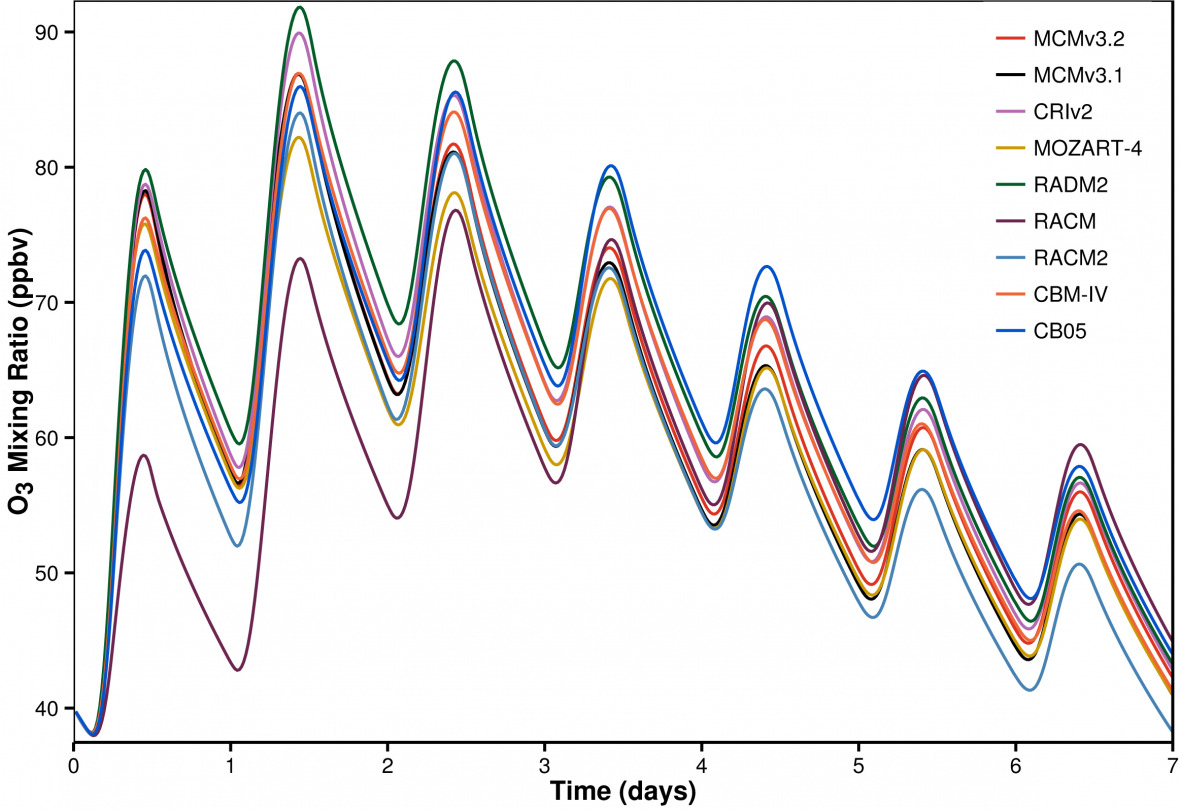Headline:
Predicting Air Quality: New Study Aids Development of Better Models

Ground-level ozone is a harmful air pollutant to both humans and vegetation. It is produced from ozone precursors such as nitrogen oxides (NOx) and volatile organic compounds (VOC). Significant sources of these precursors are traffic and industry, but also plants and soil. A recent study released in the Journal Atmospheric Chemistry and Physics compares the amounts of ground-level ozone calculated by different representations of atmospheric chemistry (chemical mechanisms) in air quality modelling. The latter refers to the mathematical prediction of concentrations of air pollution, based on measured inputs. The study shows that the assumptions that underlie chemical mechanisms influence the amount of ozone predicted by the model, especially over multiple days. This may lead to over- or underpredicted ozone levels.

As air quality models require large amounts of computing power, the complex atmospheric chemistry needs to be simplified so that a model can run efficiently. Different approaches to simplifying the atmospheric chemistry have led to the development of different chemical mechanisms. “Although many studies have compared different chemical mechanisms by comparing model outputs, our approach enabled us to look in greater detail at how the assumptions used when developing a chemical mechanism affect ozone production,” says lead author Jane Coates. This study is part of her PhD project at the IASS, “Our findings can be used when developing newer chemical mechanisms, and this will improve the representation of atmospheric chemistry within a model and also improve the confidence in model predictions for future air quality scenarios.”
The results show that on the first day of model simulations the ozone calculated by the simplified chemical mechanisms is generally similar to that produced by the highly detailed reference chemical mechanism. A reference chemical mechanism includes much more explicit information than the simplified chemical mechanisms; in this study the reference chemical mechanism includes about 15,000 chemical reactions, while the simplified chemical mechanisms only include about 150. However, it is the ozone calculated by the simplified chemical mechanisms after the first day of model simulations that differs the most from the reference chemical mechanism.

As ozone is produced through the chemistry of NOx and VOC in the presence of sunlight, the representation of this chemistry in a model is particularly important. In reality, ozone production is also influenced by weather conditions in addition to atmospheric chemistry. Detailed process studies, such as this one, aid the air quality modelling community by highlighting improvements to the representation of atmospheric chemistry. With better predictions, researchers can also have greater confidence in simulations that look at the effect of future scenarios, such as emission reductions from power plants, on ozone levels.
21.10.2015
